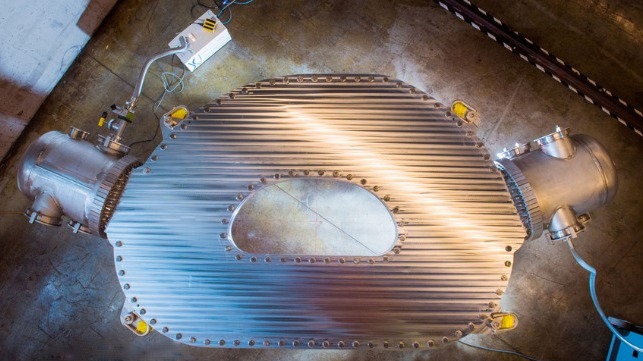At MIT, a Key Test Brings Full Decarbonization One Step Closer

A group of researchers from the Massachusetts Institute of Technology and startup Commonwealth Fusion Systems (CFS) announced Wednesday that they have solved the biggest problem in the development of nuclear fusion power - the magnet. If it can be incorporated into a viable reactor design, their research could give the world enough power for the last, most difficult part of the decarbonization effort.
The most viable options for decarbonizing transportation all require vast quantities of green hydrogen - the same hydrogen that is also in demand for decarbonizing other sectors, like petchem, steelmaking, aviation and trucking. Making enough renewable electricity to produce that hydrogen may be a very steep challenge, especially since the utility sector will need all the green power it can get.
"There's a big push right now in decarbonizing the grid with renewables - solar, wind - but at some point, probably around 2040, we're going to max out with renewables and we won't be able to decarbonize further," predicts Maria Zuber, VP for research at MIT. "We're going to need another zero-carbon option."
The option she suggests is clean fusion power, made by fusing two hydrogen atoms into one helium atom. This requires the same conditions found within the heart of the sun - far too hot for any manmade material to handle. To achieve a sustained fusion reaction, researchers need to contain the gas within an extremely powerful magnetic field. In decades of trying, it has never been done in a way that generates more power than it consumes, and many skeptics are not sure it can be done by mid-century - if at all.
That may be about to change. On September 5, a joint MIT / CFS team set a new record for the strongest magnetic field from a high temperature superconducting (HTS) magnet. Its brand-new design and materials are worlds apart from the gigantic superconducting magnets used in fusion power research to date. By way of comparison, the superconducting magnets in the gigantic ITER fusion research installation weigh in at around 10,000 tonnes and stand three stories tall; it took seven years and nine manufacturers just to make enough special wire to build their assemblies.
"In the creation of a nuclear fusion powerplant, arguably the biggest miracle [we need] is the magnets. And that's where we are today," said Zuber proudly.
The "high temperature" in HTS is relative: HTS magnets still need to be chilled to less than -280 degrees Fahrenheit, below the point at which oxygen becomes a liquid. However, this is a lot warmer than first-generation superconductors, which need temperatures below about -400 Fahrenheit in order to function. Temperatures that cold are challenging to maintain and require sophisticated equipment, which increases the size, cost and energy requirements of the reactor design. HTS magnets do not have these complications.
"This new magnet technology allows us to make fusion so much smaller that . . . we're going to be able to get there so much sooner than people have thought previously," said Dennis Whyte, the director of MIT's Plasma Science and Fusion Center and the co-founder of CFS.
The startup is optimistic that it can demonstrate net-positive energy from fusion in a test-scale reactor by 2025. It hopes that this will pave the way for the first commerical-scale fusion power plant ever built - and help repower the world.
“This record-breaking magnet is the culmination of the last three years of work and will give the world a clear path to fusion power for the first time,” said Bob Mumgaard, CFS CEO. “The world needs a fundamentally new technology that will support efforts to decarbonize on a timeline that can mitigate climate change. This test of our magnet proves we have that technology, and we’re on our way to producing clean, limitless energy for the entire world.”
The team has the backing of MIT, but through CFS, it can also draw on private sector funding. CFS' investors include big names in energy, including oil majors Eni and Equinor. On Wednesday, Eni put the results of the magnet test - not its oil and gas business - at front and center on its website.
"For Eni, magnetic confinement fusion holds a pivotal role in the technological research for decarbonization, as it will [allow] humanity to access large quantities of energy produced in a safe, clean and virtually inexhaustible way, without emissions," said Eni CEO Claudio Descalzi in a statement.
